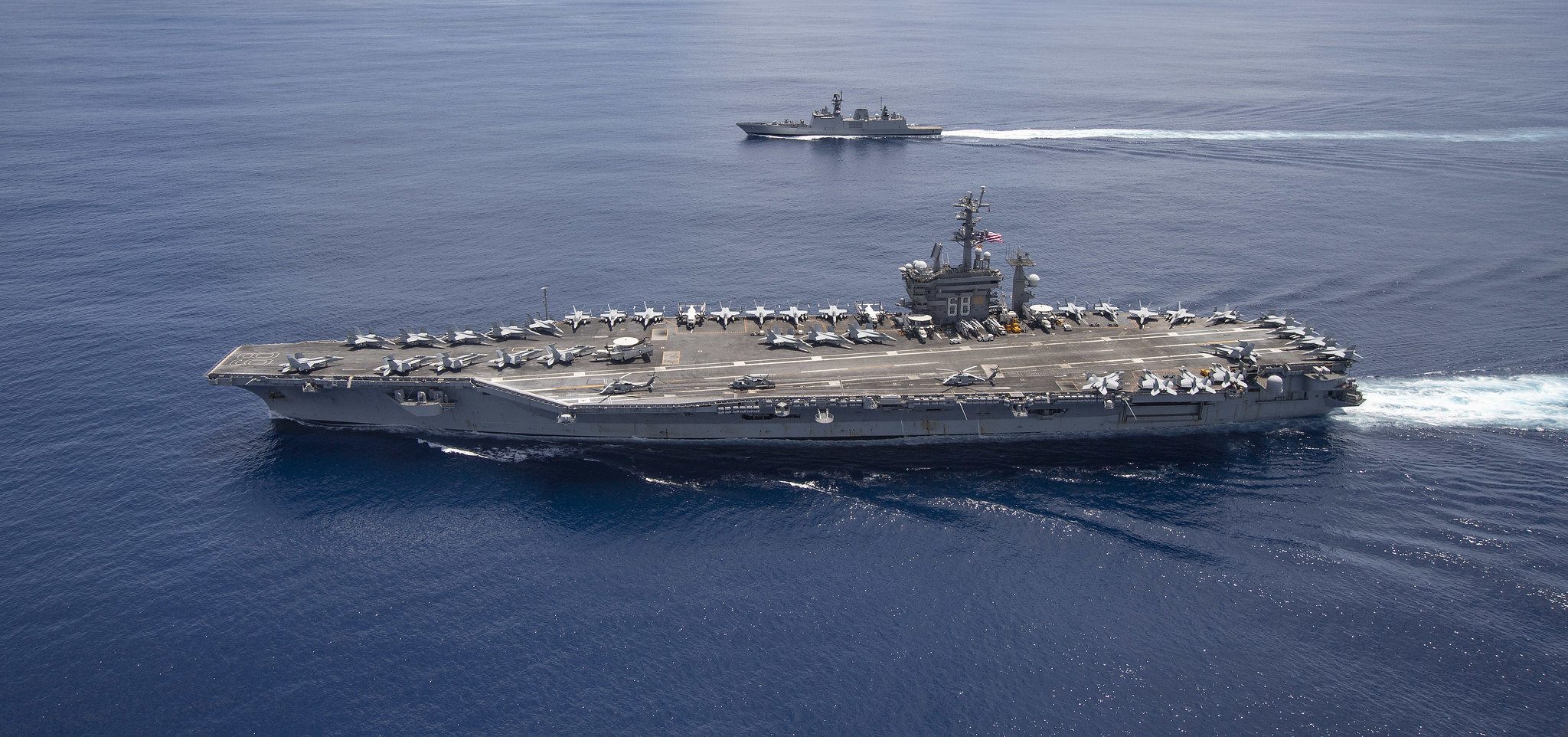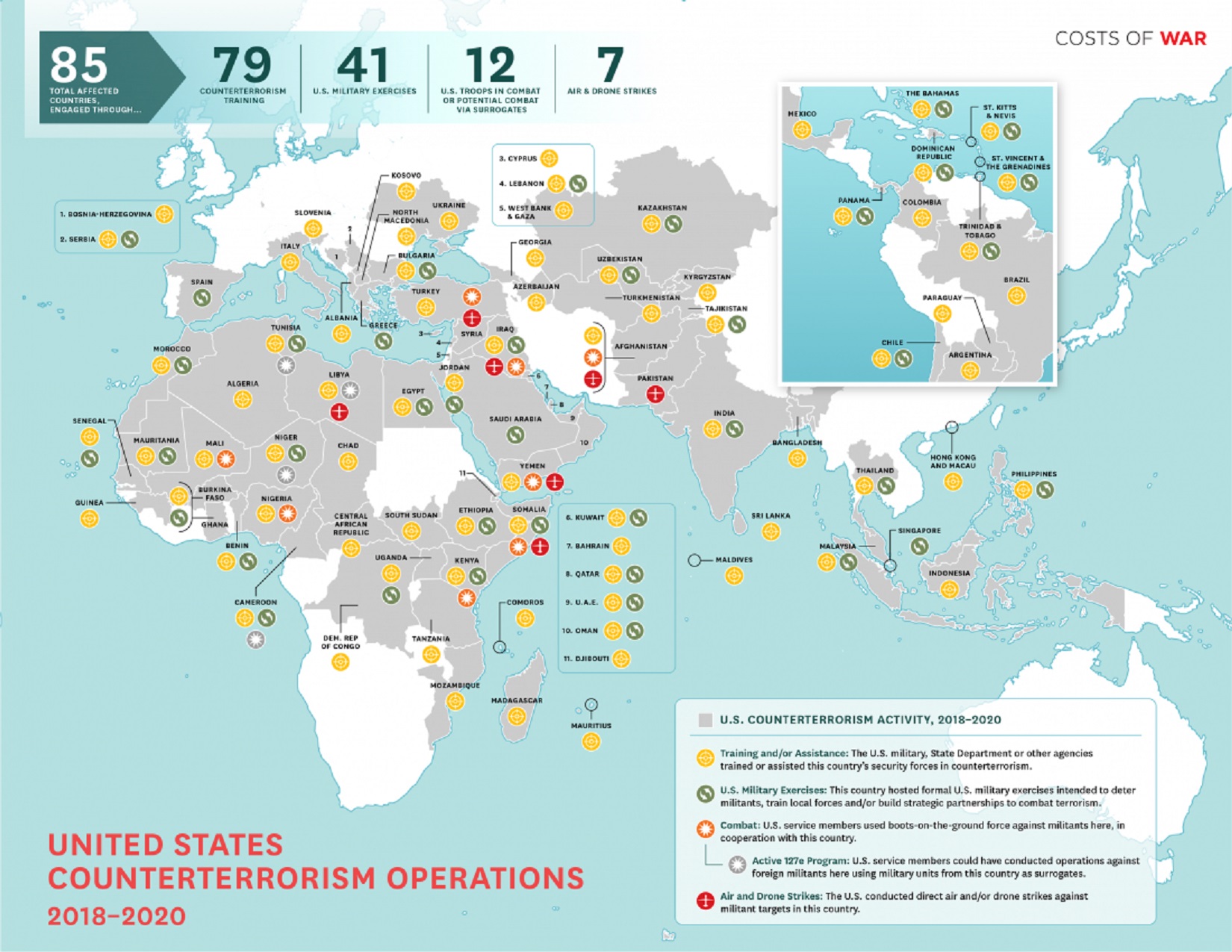Since the attacks on the World Trade Centre and the Pentagon carried out by Al Qaeda on September 11 2001, the US has been continuously at war in numerous countries around the world. Initially dubbed a “Global War on Terror”, these wars have come to be seen as “forever wars” – unending conflicts against a shifting series of enemies, mostly non-state armed groups with little or no connection to the original Al Qaeda group, in a futile pursuit of security through bombing. These wars, most prominently the invasion of Afghanistan in 2001 and the illegal invasion of Iraq in 2003 – in both of which the UK was a key ally – have caused hundreds of thousands of civilian and military deaths, displaced millions of people, and devastated societies and economies across the Middle East and beyond, while costing the US trillions of dollars.
The ‘Global War on Terror’
Following the terrorist attacks by Al Qaeda on the World Trade Center and the Pentagon on 11th September 2001, killing nearly 3,000 people, US President George W. Bush declared a ‘Global War on Terror’. Within a week, the US Congress passed, almost unanimously, an Authorization for the Use of Military Force (AUMF), enabling military retaliation by the US. While theoretically directed against Al Qaeda and allied forces, the AUMF was interpreted by successive administrations as allowing military force against any country or group considered by the US to be a threat or acting contrary to its interests. The designation by President Bush of Iran, Iraq, and North Korea as an “Axis of Evil” in January 2002 set the stage for aggressive military action in the years to come.
The US-led invasions of Afghanistan and Iraq in 2001 and 2003 respectively – both carried out alongside the UK – were the biggest wars that followed the War on Terror declaration, but far from the only ones. (See map below). The US and UK launched a bombing campaign to overthrow the Taliban regime in Afghanistan in October 2001, with the stated justification that the Taliban were harbouring Osama bin Laden and Al Qaeda, responsible for the 9/11 bombings. The 2003 invasion of Iraq by the US, UK, and Australia, an act of aggression that was clearly illegal under international law, was based on the false claim that Iraq possessed weapons of mass destruction, and (by the US) the equally false claim that Iraqi dictator Saddam Hussein had collaborated with Al Qaeda in the 9/11 attacks. US forces have remained in both countries ever since, apart from a 3-year gap in Iraq from 2011-14.
President Joe Biden has pledged to end the “Forever Wars”, and has announced a complete US military withdrawal from Afghanistan by September 11 2021. But there is no sign of an end to the US’s other military engagements.




